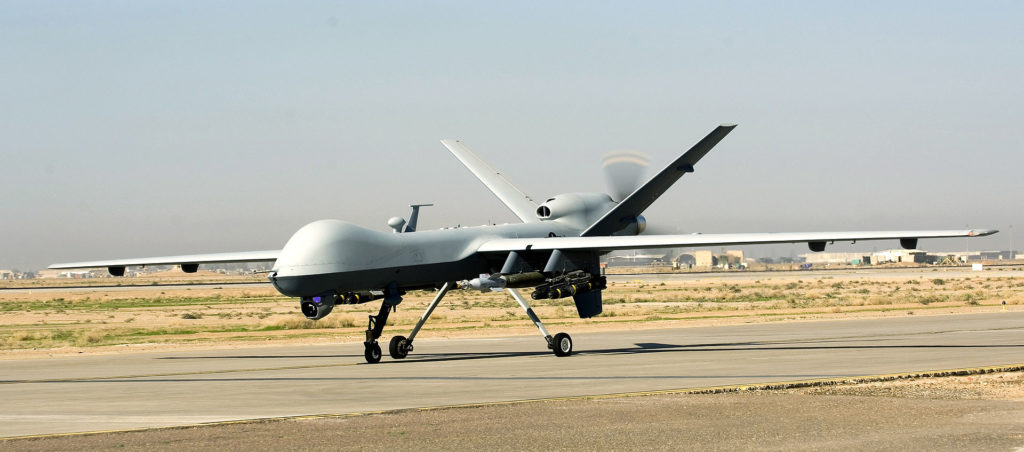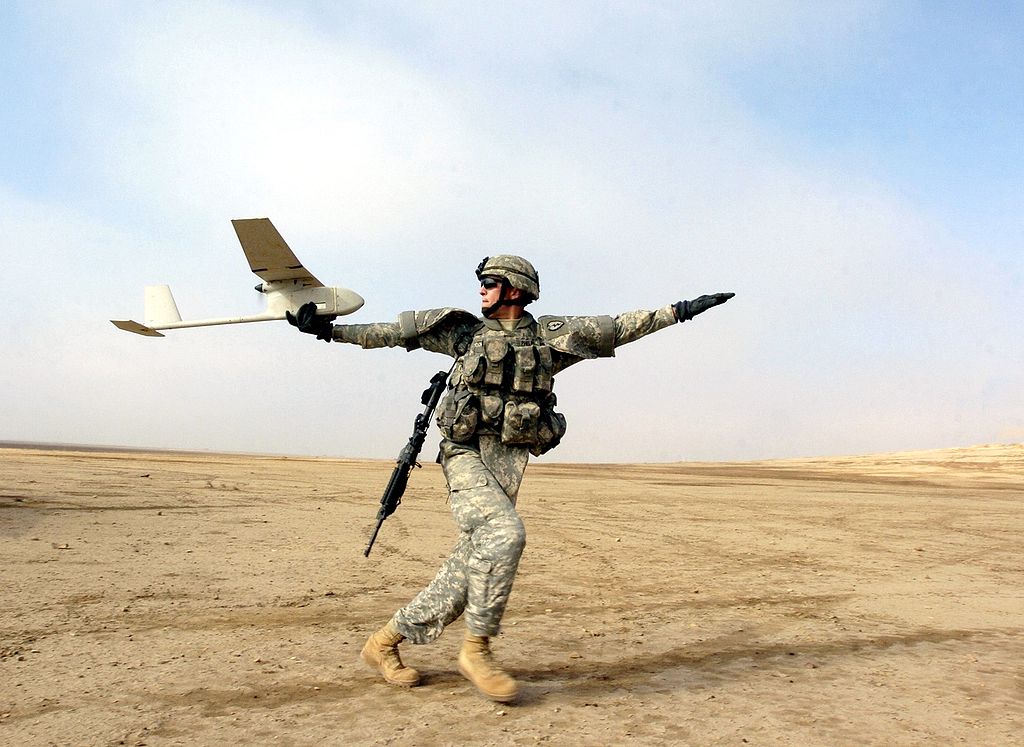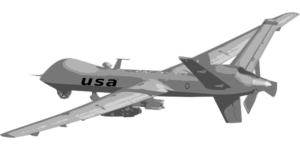Drones have become associated with the silent hunter that can strike at anytime. The thought of a lingering and deadly presence in the sky preys on the paranoia of individuals especially those that know they are a target. The Predator drone probably is the first uav that comes to peoples’ minds when thinking about drones that deliver death to enemies.
There are more and these are the types of unmanned air vehicles broken down by type.
- Micro, Mini and Small: Unlike bigger UAVs these drones typically don’t require a runway. These are typically 330 pounds or less and can take off vertically in any direction. These drones are used at the squad level in a forward deployed position. Drone swarms also fall into this category and are a growing military capability.
- Tactical: These are typically between 330 and 1,300 pounds. They are used for situational awareness, strike assessment, military unit protection, surveillance, reconnaissance, and targeting.
- Strategic: Any drone over 1,300 and have high altitude and long endurance capabilities. This is the category where the Predator and Global Hawk UAVs would fall under.
Micro Drones
Drone swarms are the best fit for this type of drone. If you haven’t seen videos of these yet, watching one is a wake-up call to the future of warfare that is coming. One has been inserted below and you’ll need to check out the sound of swarm. If you’re a future target this sound is going to be worse than a brief thump and scream of an incoming artillery round. In this video the Perdix drone is tested with F-18 Hornets military jets ejecting them out from external pods/canisters attached to the aircraft.
Mini Drones
Miniature drones can be carried by soldier in a backpack or case to be deployed in a location in the battlefield. One of the more famous mini drones that we know is deployed is the Switchblade made by the company AeroVironment. Specific stories of “in-action” reports have not been shared but reports from US infantry in Afghanistan have stated that the system has been highly effective. The army designates the Switchblade as a missile rather than a drone. A more accurate term associated with it’s use is a loitering munition illustrating how it can fly around an area before it is steered by its operator directly into a target to destroy it. The Switchblade carries an equivalent to a 40mm grenade able to destroy an armored personnel carrier or take-out and individual.
Small Drones
Small drones can include hand or catapult launched uav systems. These types of unmanned air systems are utilized for day or night aerial intelligence, reconnaissance, and target acquisition. These types of drones can be transported by person or humvee-like vehicles. They are usually deployed at the battalion or company level versus a squad like the micro and mini drones. A good example of the small drone is another vehicle made by the AeroVironment company called the RQ-11 Raven. This drone is well used by the US Army , Airforce Marine Corp and other international militaries. Countries including Australia, Colombia, Phillipines, Ukraine, Pakistan, Uganda and many others have purchased them. Over 20,000 of the Ravens have delivered to customers worldwide. The Raven can fly for about 60-90 minutes and can circle the operator out about 6 miles. Nice feature of the drone is that it can land itself to a designated landing area using an ‘auto-land” feature. Below are specs to get a sense of the size and capability of the drone.
- Wing Span: 4.5 ft (1,372 mm)
- Length: 3 ft (915 mm)
- Weight: 4.2 lb (1,906 g)
- Engine: Aveox 27/26/7-AV electric motor
- Cruising speed: approx. 18.64 mph (30.00 km/h)
- Range: 6.2 miles (10 km)
- Endurance: approx. 60–90 min
Tactical Drones
Tactical drones are operated usually at the brigade level and much larger than the micro and mini drones. They typically come with a ground station and launch system to get them airborne. A good example of this type is the RQ-7 Shadow. It is an American built drone but also used by other countries like Sweden, Italy and Romania. The Shadow uav is launched from a trailer-mounted pneumatic catapult . The Shadow drone has flown over 37,000 missions supporting mostly missions in Iraq and Afghanistan. The drone can fly over 4 hours with a range over 31 miles making it effective to monitor troop movements. Highlighting limitations that strategic drones don’t have, the RQ-7 shadow is unable to operate in inclement weather conditions. It is not able to fly in the rain and it is not able to see through the clouds.
Strategic Drones
This category of drone is one that changes the game at the global power level. These types of drones bring significant capability to a regional theater able to deploy devastating firepower or superior intel gathering and reconnaissance. The MQ-1 Predator has a relative made by the same company (General Atomics) call the MQ-9 Reaper. The Reaper is a larger and more capable drone than the Predator. The Reaper can carry over 14 times the amount of missiles or bombs compared to the Reaper. It can also fly at cruise speed 2 times faster. Similar to a Predator it is operated and monitored from a Ground Control Station (GCS) that can be located across the world.
Another strategic drone that is not heard about much is the MQ-4C Triton made by Northrop Grumman. The Triton can trace its roots directly to the famous RQ-4 Global Hawk drone . The Triton specializes in Maritime Operations focused on tracking airplanes and ships. The uav design allows it to stay in the air for 30 hours. A single mission can require multiple ships of ground control operators. The Triton is built to allow it to withstand bird and lightening strikes as well as an airframe that can hold in a rapid descent.



